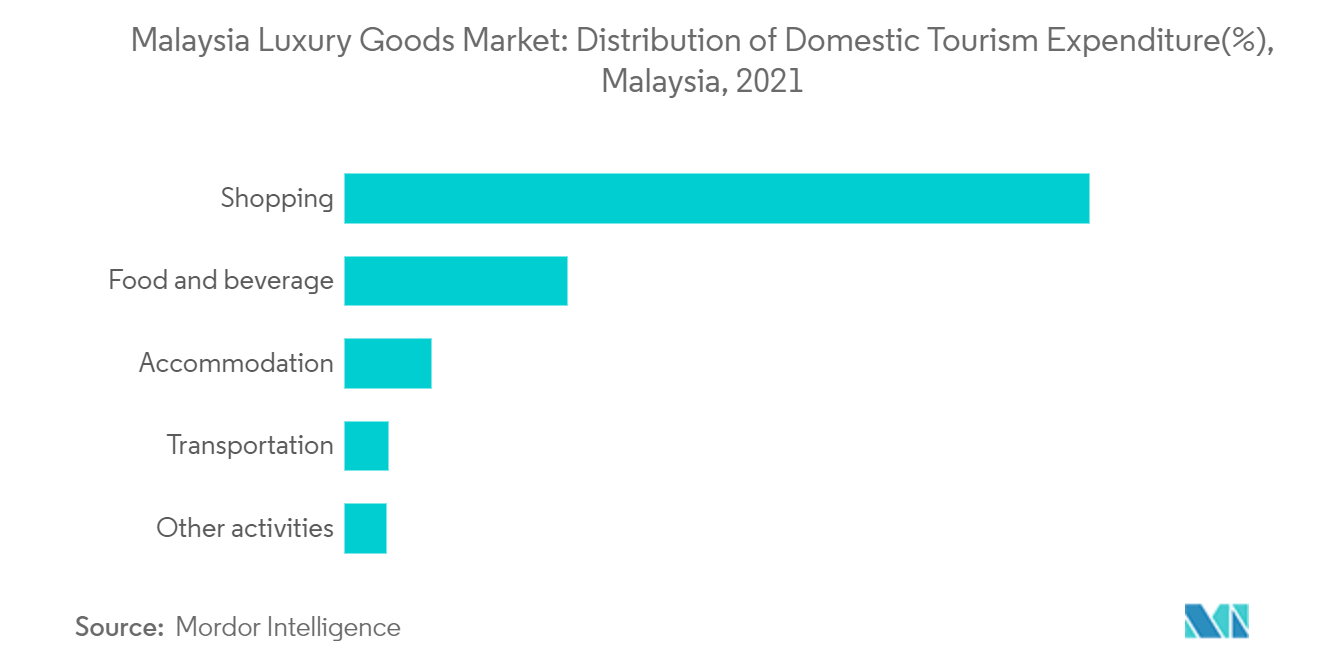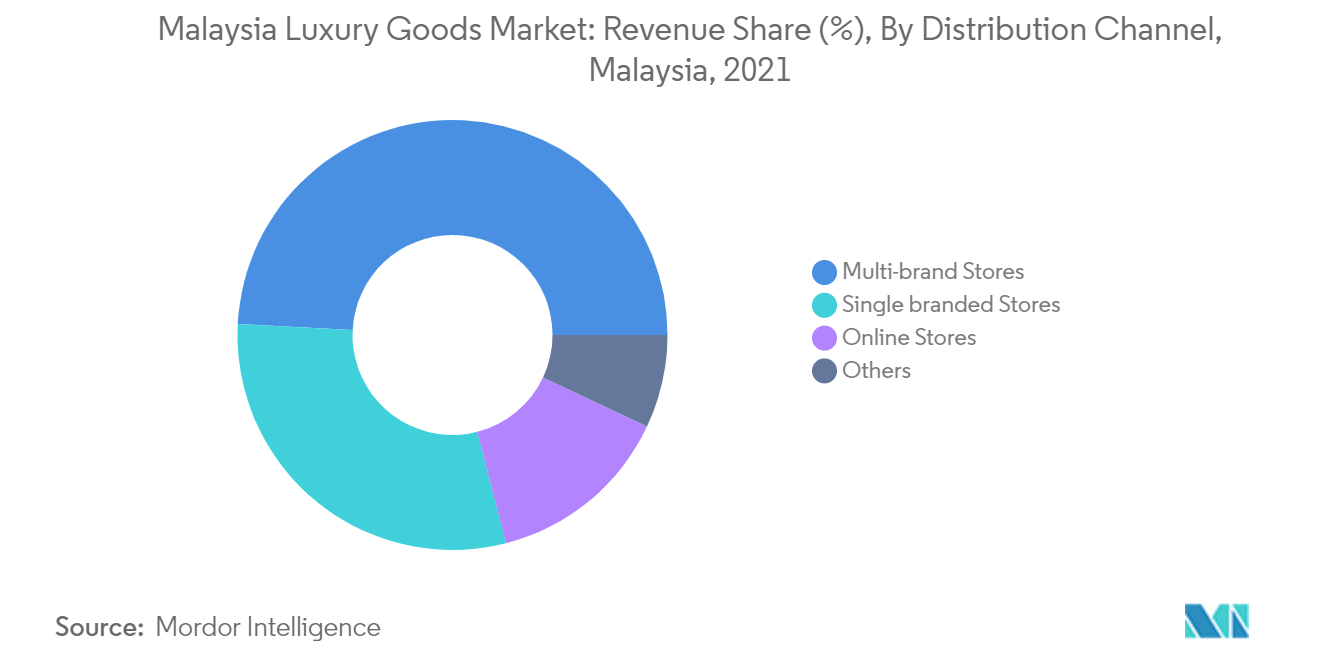Market Trends of Malaysia Luxury Goods Industry
This section covers the major market trends shaping the Malaysia Luxury Goods Market according to our research experts:
Increasing Tourism and Growing Cultural Influence
The sustained growth of the luxury goods market can be attributed to the continuing rise in the tourism industry. The travelers visiting the country have high disposable income and often buy luxury goods from the outlets of various multinational brands. Malaysia holds an economically strong market, and therefore, major multinational brands often launch their premium products earlier in these countries than in many others. Travelers visiting from around the world are attracted by the new luxury products, which they almost always purchase. According to a survey by Statistics Malaysia in 2021, the largest share of domestic tourism expenditure came from shopping, which made up 50.3 percent of the total domestic tourism expenditure. In comparison, accommodation made up 5.9 percent of domestic tourism expenditure.
Tourists often prefer perfumes and leather products for luxury purchases. As a result, key brands in the segment are offering a broad portfolio of these products. For instance, Gucci has a product portfolio in the country that comprises more than 29 variants of perfumes. On the other hand, the increasing influence of culture and social pressure in society, along with the growing wealth and super-rich population, who are willing to spend millions on luxury items, is driving the market for luxury goods in Malaysia.
Moreover, high-income households prefer to gift luxury goods such as jewelry and watches to express love, affection, and prestige as branded products are perceived to elevate the owner's social status. The trend is anticipated to continue in the forecast period which in turn augments the market growth.

Multi- Brand Store Holds A Prominent Share
The primary distribution channels for the sales of luxury goods in the country include single-brand stores, multi-brand stores, and other offline channels, which include supermarkets/hypermarkets, department stores, and warehouse clubs. Multi-brand stores account for most of the sales of luxury goods, including clothing, footwear, watches, and other accessories, across the country due to an ample market space catering to a wide range of preferences. The luxury goods business has seen an increase in sales of premium products from these mass merchandisers because of the wide availability of various brands, which has been a major factor in evolving customer preferences.
Multi-brand stores showcase a wide range of private-label products. Most of the brands sold in these shops, use an ''own name" approach. Many luxury goods manufacturers opt for local agents or dealers (companies, associations, or individuals) who have the ability and expertise to market and distribute their goods in Malaysia, rather than opening an office or a subsidiary. This allows international firms to benefit from local experience while avoiding any of the costs associated with having a physical footprint in the country.

